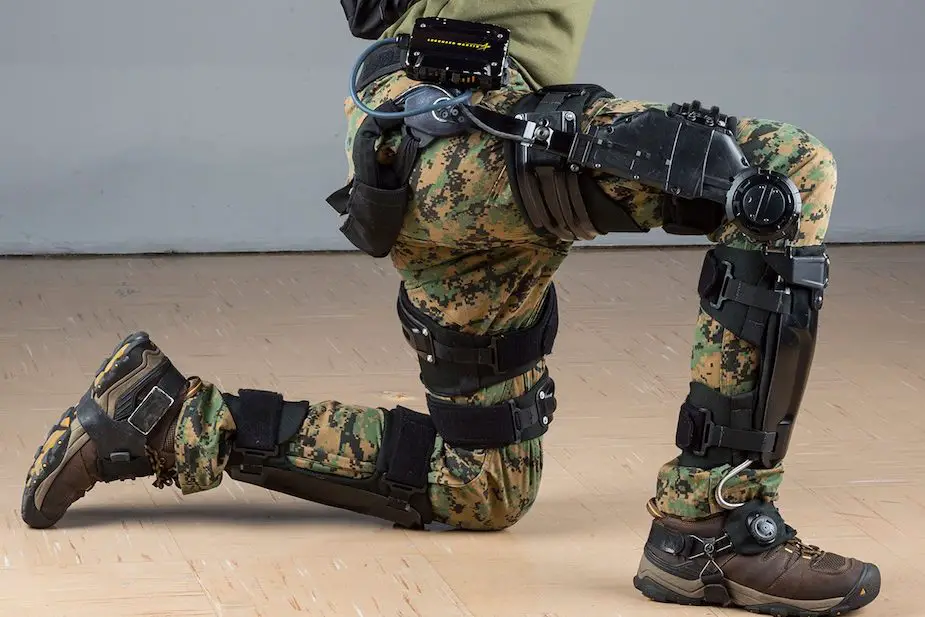Breaking news
Eurosatory 2018: Army Recognition discussed with Lockheed Martin about the ONYX exoskeleton.
Stelios Kanavakis
Senior Defence Analyst
Eurosatory 2018 was an opportunity for Army Recognition to discuss with Lockheed Martin about the latest developments on the ONYX exoskeleton programme. Although the system was not showcased at the exhibition, it was recently presented to the US Army’s and its leadership, which are looking to put in the field new technologies.

The ONYX lower body exoskeleton. (Picture source Lockheed Martin)
ONYX is an advanced prototype being currently under development between the US Army and Lockheed Martin, which is funding these efforts under a Cooperative Research and Development Agreement.
The presentations and tests to be carried out, will allow the US Army to set up a capability development document for an exoskeleton Programme of Record and the next stages of the project. That testing period will last 18 months before any contract is awarded.
The last presentation took place in front of the Army’s Close Combat Lethality Task Force and the US Army’s Chief of Staff General Mark A. Milley, who, back in October 2017, issued a Capabilities Modernization Memo.
Projects to build capable exoskeletons have been taking place since the 60’s. Despite the significant support the various models have provided to the civilian sector or the military, mostly in positions related to logistics and support, they have not been able to enhance soldiers with the manoeuvreability required in combat.
Lockheed Martin’s work in the exoskeletons started in 2008 with HULC (Human Universal Load Carrier), which nevertheless ended in 2013, due to non optimal results of the control system, in weight and power, for the use it was intended to. As a result the development ceased in 2013.
However, the lessons learned from the HULC programme were used a year later in unpowered systems. That was when Lockheed Martin began the development of FORTIS, the first industrial exoskeleton. Its development was with technology licensed by Ekso Bionics and in partnership with the ROBRADY company. FORTIS was marketed to domestic and international customers. 30 FORTIS exoskeletons have been sold and are in use in U.S. Navy shipyards and commercial industrial sites.
A year ago, the Lockheed Martin team began working on powered systems. The development of next-generation control systems and sensors, and licensing of lightweight and conformal technologies led to the ONYX powered knee exoskeleton.
ONYX is a lighter, less expensive and more versatile exoskeleton, which does not impede any natural range of motion. Thanks to that, the user does not have to exert additional force, thus avoiding any risk of common injuries.
Despite the fact that Lockheed Martin is well ahead with ONYX, at the same time it evaluates various upper body exoskeleton technologies for integration with the lower body. Modularity is the main objective, so as for the users to be able to carry out a wide range of tasks that require a wide range of motions.
With new technologies becoming available, the future of exoskeletons in combat applications seems brighter. In the case of the US Army, the Service will have a better understanding of the technology through the tests. Then it will be able to determine where and how this technology is fielded to augment soldiers’ capabilities in combat operations.


























